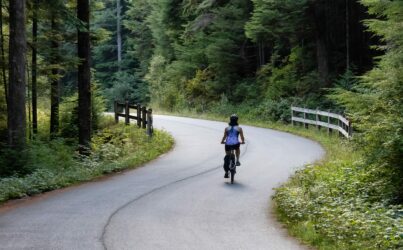Back pain is pervasive among American adults, but they are not alone: Young children are suffering from back pain much earlier than previous generations, and the use of overweight backpacks is a contributing factor for some, according to the American Chiropractic Association (ACA).

“In my own practice, I have noticed an increase in the number of young children who are complaining about back, neck and shoulder pain,” said ACA member Dr. Scott Bautch, who practices in Wausau, Wis., and is president of ACA’s Council on Occupational Health. “The first question I ask these patients is, ‘Do you carry a backpack to school?’ Almost always the answer is ‘yes.’”
This back pain trend among young people isn’t surprising when you consider the disproportionate amounts of weight they carry in their backpacks—often slung over just one shoulder. Surveys show children today carry everything from books, laptops and school supplies to sports uniforms, shoes and water bottles in their backpacks at any given time.
One study examining the impact of backpacks on children found that over 70% of children surveyed had a backpack that exceeded the recommended 10% of their body weight. Of these children, 32% complained of back pain.
Another study on backpack weight and schoolchildren’s posture showed that head and spinal posture were affected by backpack weight, with heavier backpacks causing a child’s head and spine to bend farther forward.
What Can You Do?
Dr. Bautch suggests using an ergonomically designed backpack. He offers parents the following tips on choosing the right backpack for their child and wearing it properly:
- Make sure your child’s backpack, when packed, weighs no more than 10 percent of their body weight. A heavier backpack will cause your child to bend forward to support the weight on the back, rather than the shoulders.
- The backpack should never hang more than four inches below the waistline. A backpack that hangs too low increases the weight on the shoulders, causing your child to lean forward when walking.
- A backpack with individualized compartments helps in positioning the contents most effectively. Make sure that pointy or bulky objects are packed away from the area that will rest on your child’s back.
- Bigger is not necessarily better. The more room there is in a backpack, the more your child will carry and the heavier the backpack will be.
- Urge your child to wear both shoulder straps. Lugging the backpack around by one strap can cause the disproportionate shift of weight to one side, leading to neck and muscle spasms, as well as low back pain.
- Wide, padded straps are very important. Non-padded straps are uncomfortable and can dig into your child’s shoulders.
- The shoulder straps should be adjustable so the backpack can fit to your child’s body. Straps that are too loose can cause the backpack to dangle, causing spinal misalignment and pain.
- If the backpack is still too heavy, talk to your child’s teacher. Ask if your child could leave the heaviest books or items at school and bring home only lighter hand-out materials or workbooks.
- Roller packs—or backpacks on wheels—should be used cautiously and on a limited basis by only those students who are not physically able to carry a backpack. They present their own risks if they clutter hallways, potentially resulting in dangerous trips and falls.
Chiropractic Care Can Help
If you or your child experiences any pain or discomfort resulting from backpack use, call your chiropractor. Doctors of chiropractic are licensed and trained to diagnose and treat patients of all ages. In addition, chiropractors can recommend exercises designed to help children develop strong muscles, along with instruction in good nutrition, posture and sleeping habits.
References
Chen Y-L, Mu Y-C. Effects of backpack load and position on body strains in male schoolchildren while walking. PLoS ONE. 2018;13(3): e0193648. https://doi.org/10.1371/journal.pone.0193648
Perrone M, Orr R, Hing W, Milne N, Pope R. The impact of backpack loads on school children: A critical narrative review. Int J Environ Res Public Health. 2018;15(11):2529. Published 2018 Nov 12. doi:10.3390/ijerph15112529



